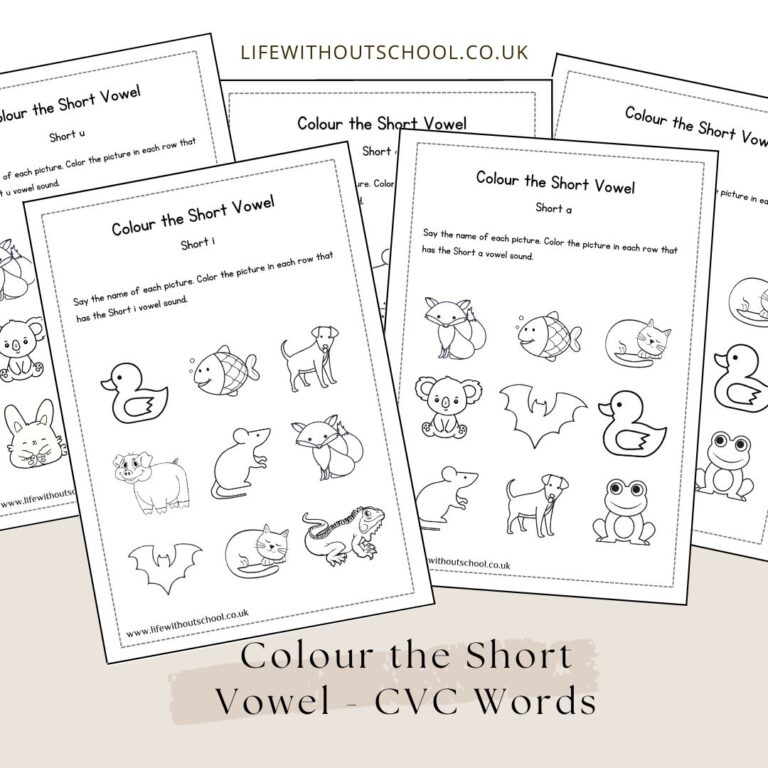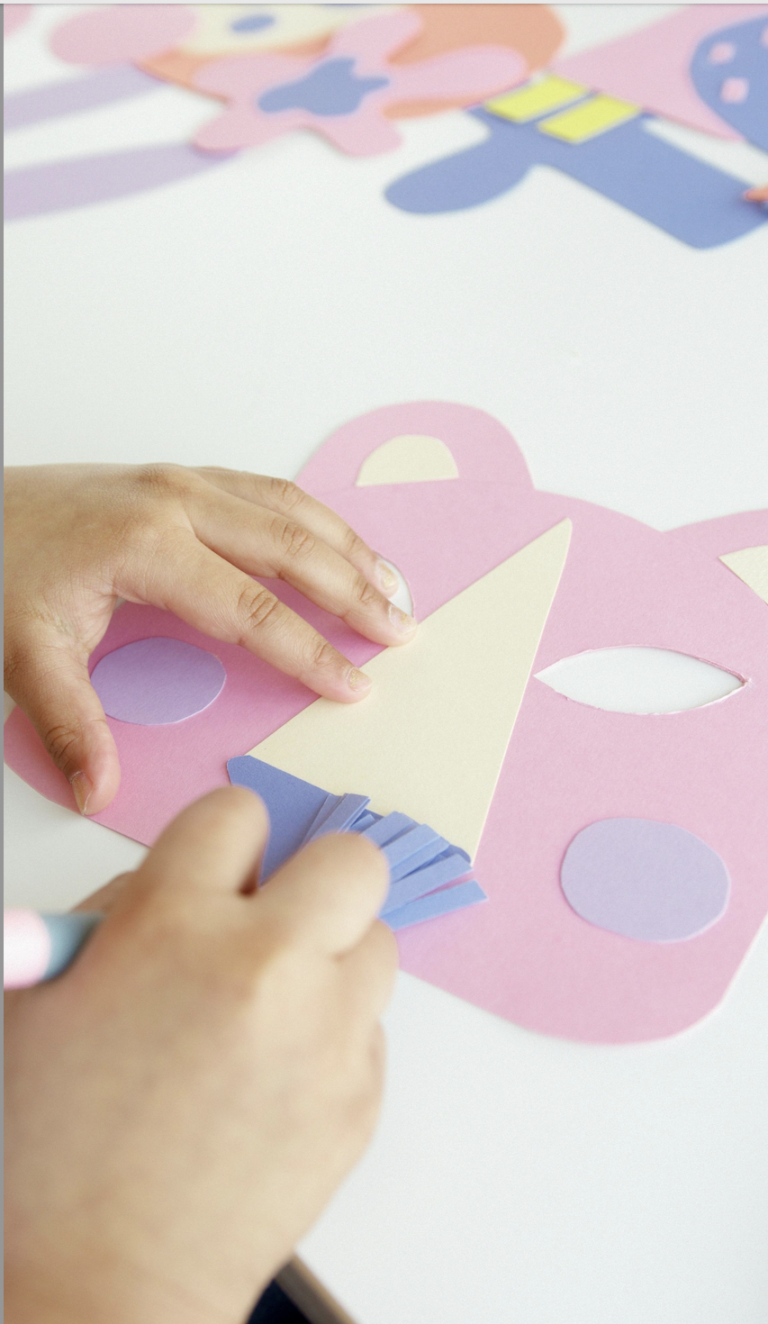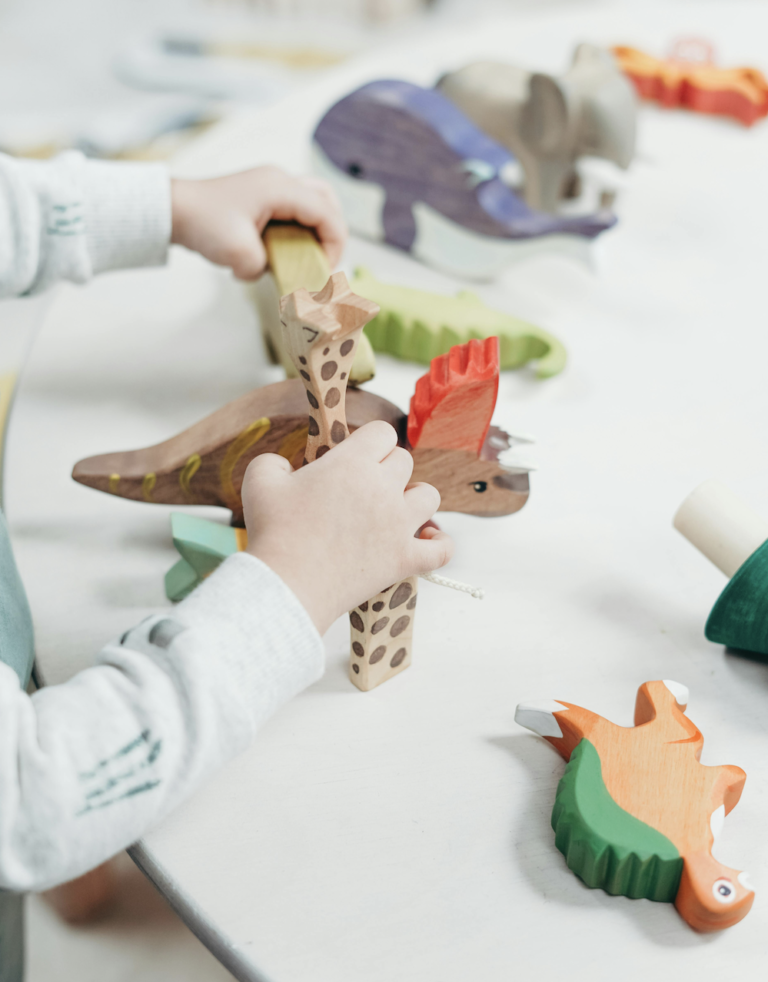Short Vowel Worksheets for Reception - CVC Words
Short Vowel Worksheets for Reception aged children. CVC Words. Free Printable Worksheet

Colour The Short Vowel - CVC Words Free Printable Worksheets for your Homeschool
This (Short Vowel Worksheets for Reception aged kids) download consists of 5 worksheets! One for each vowel.
Teaching children short vowel sounds ( 'ah' instead of 'ay') is a critical step in their early literacy journey.
It helps lay the foundation for reading and writing, and equips them with essential skills that will serve them well throughout their education and beyond.
Short vowel sounds are the basic building blocks of the English language, and understanding them provides your child with a strong foundation which is what the focus needs to be especially during the early years.
Children usually learn the short vowels in reception but of course you can decided when your child is ready for them.
Why CVC words and short vowels
- When children can identify and produce short vowel sounds, they are better prepared to sound out and read simple words, which is an essential skill for early literacy.
- Learning short vowel sounds helps children understand the relationship between letters and sounds. This understanding is crucial for spelling words correctly and for recognizing common spelling patterns in the English language.
- Recognising short vowels can help your child break down and understand the pronunciation of new words they encounter.
- Mastering short vowel sounds will give your child the confidence to tackle basic reading and writing tasks. When they can decode words with short vowel sounds, they become more independent readers and writers.
- Short vowel sounds are the building blocks upon which more complex phonics and spelling rules are based. A solid foundation in these sounds will make it easier for your child to grasp and apply more advanced phonics principles as they progress in their reading and writing skills.
Teaching your child short vowels is the quickest and simplest way to get them not only reading, but reading with fluency and accuracy.
Download your freebie!
Short Vowel Fun
With young children, wherever possible it's important to create fun activities to help them with their learning.
This post from The measured mom has some brilliant ideas.
The hands on activities means your child is having fun whilst also reaching their target.
Children need engaging experiences to help them retain information quicker and easier.
Hands on learning - or active learning - can help enhance their education in so many ways.
There are so many benefits which come with active learning.
Some of which are listed below:
- 1. Develop critical thinking skills. First and foremost, actively engaging in an activity helps keep your child’s interest and keep them actively involved, which in turn will help motivate them to learn.
- 2. Improved understanding and memory. Secondly I find that children are much more likely to understand and remember something when they are experiencing them firsthand. Physically taking part in an activity rather than sitting through workbooks makes ideas and concepts easier to understand.
- 3. Develop critical thinking skills. Hands on, or active learning, helps encourage children to solve problems they may encounter as they explore and experiment. Which in turn would lead to them gaining critical thinking skills. They can learn how to draw conclusions based on their interactions and observations.

- 4. Encourages exploration and curiosity in their little brains. Hands-on learning can foster a sense of curiosity which encourages children to ask questions, discover new information and explore different options.
- 5. Help build both fine and gross motor skills. Taking part in hands-on activities gives children the opportunity to develop both their fine and gross motor skills. Fine motor skills through tasks like cutting, assembling and writing. Gross motor skills through activities like building and moving.
- 6. Working with others. A lot of the time hands-on activities involve working with a group. This creates the perfect opportunity for young children to develop social skills. It can help them learn to work as part of a team which can also help them understand different perspectives and ideas.
- 7. Emotional development. Sort of following on from the previous point, working on a task with peers means children can develop emotional skills such as empathy, communication skills as well as conflict resolution and many more.
- 8. Personalised learning pace. Taking part in hands-on activities means your child can work at their own pace without the pressure of time restraints. This allows your child to take their time to explore and understand a concept completely. This would be really helpful for those children who struggle to understand from just being spoken to or through the use of workbooks.

Hands on learning
- 9. Connect to the real world. Usually hands-on learning activities can be applied to the real world. This makes the activity both practical and relevant to your child’s day to day life. It can help the children see how their activities are applied to real life scenarios which not only helps them to relate the activity to their life. But it can also encourage them to apply what they have learnt.
- 10. Encourages independence and confidence. As children take part in hands-on activities, they learn to rely on their own knowledge and skills to complete the tasks. This can help encourage strong independence. Once they are able to complete the activity independently, this can really help boost their confidence, which in turn will help encourage more independence.
- 11. Use multiple senses. With hands-on learning children will often use multiple senses to complete the task at hand. This can really help with their memory of said task. The more sense you use during a task, the more likely you are to remember the task and what was involved in completing the task. Not only that but using more sense can help create a much richer learning experience.
- 12. Get creative. With hands-on tasks children have the opportunity to come up with creative solutions. They can use their imagination to help them complete the task. This gives them the ability to think outside the box.
Overall, hands-on activities are a great method for teaching as it works well and caters for different needs and learning styles. It is both fun and engaging and can make all the difference when it comes to teaching, whether that’s individuals or groups of children.
Something as simple as using a worksheet which requires colouring in rather than writing can be counted as “hands-on”.
Tasks like colouring, cutting and sticking are an awesome learning tool. They break down the work into many sections. First colouring, which is loved by almost everyone. Then cutting where children can have a go at learning the skill of cutting. And finally sticking. This is the point where the child needs to figure out where the papers need to be stuck, but because it’s already been such a fun and interactive process, this part seems much easier to digest. That sense of achievement after it’s all been stuck down is almost unbeatable.
.
Looking for more CVC words worksheets?
Click here to have a look.

